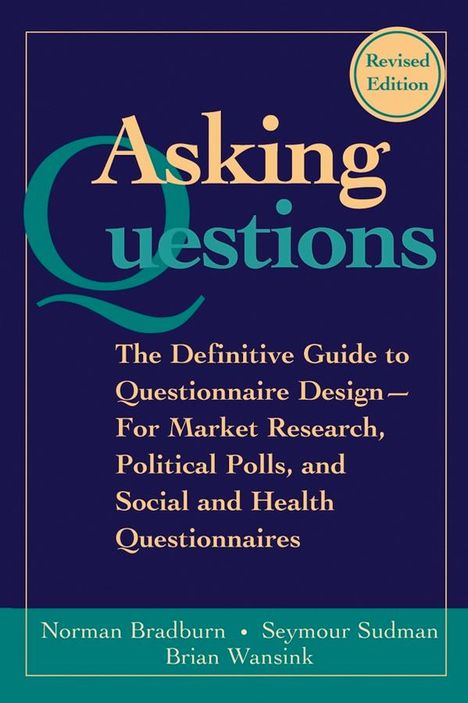Norman M. Bradburn (University of Chicago): Asking Questions, Kartoniert / Broschiert
Asking Questions
- The Definitive Guide to Questionnaire Design -- For Market Research, Political Polls, and Social and Health Questionnaires
(soweit verfügbar beim Lieferanten)
- Verlag:
- John Wiley & Sons Inc, 04/2004
- Einband:
- Kartoniert / Broschiert
- Sprache:
- Englisch
- ISBN-13:
- 9780787970888
- Artikelnummer:
- 2118771
- Umfang:
- 448 Seiten
- Ausgabe:
- 2nd, Revised Edition. Auflage
- Copyright-Jahr:
- 2004
- Gewicht:
- 560 g
- Maße:
- 226 x 154 mm
- Stärke:
- 31 mm
- Erscheinungstermin:
- 21.4.2004
- Hinweis
-
Achtung: Artikel ist nicht in deutscher Sprache!
Weitere Ausgaben von Asking Questions |
Preis |
|---|---|
| Buch, Kartoniert / Broschiert, Englisch | EUR 66,31* |
Klappentext
"The best single source about the present state of knowledge of questionnaire construction."
?Choice
Since it was first published more than twenty-five years ago, Asking Questions has become a classic guide for designing questionnaires?the most widely used method for collecting information about people?s attitudes and behavior. An essential tool for market researchers advertisers, pollsters, and social scientists, this thoroughly updated and definitive work combines time-proven techniques with the most current research, findings, and methods. The book presents a cognitive approach to questionnaire design and includes timely information on the Internet and electronic resources. Comprehensive and concise, Asking Questions can be used to design questionnaires for any subject area, whether administered by telephone, online, mail, in groups, or face-to-face. The book describes the design process from start to finish and is filled with illustrative examples from actual surveys. Asking Questions guides you through how to
- Determine what information is needed
- Phrase questions to minimize bias and distortion
- Obtain successful questions from existing questionnaires
- Control the level of threat
- Order questions to encourage response
- Select the best administration method
- Adapt questions and format to specific situations
- Test and validate the completed survey
- Evaluate and revise the questionnaire for improved results

